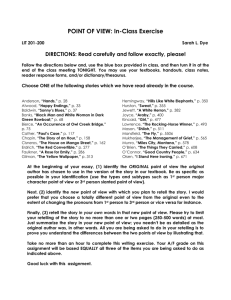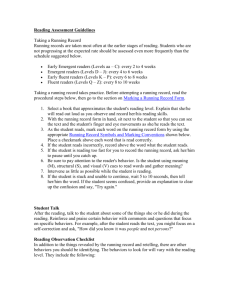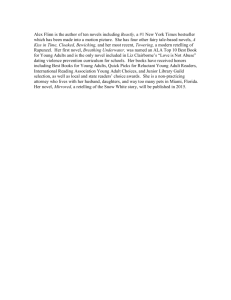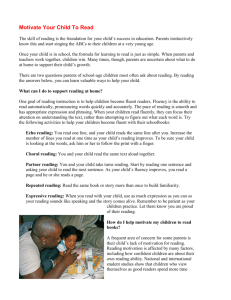Running Records - Mrs. Balls' Literacy Library
advertisement
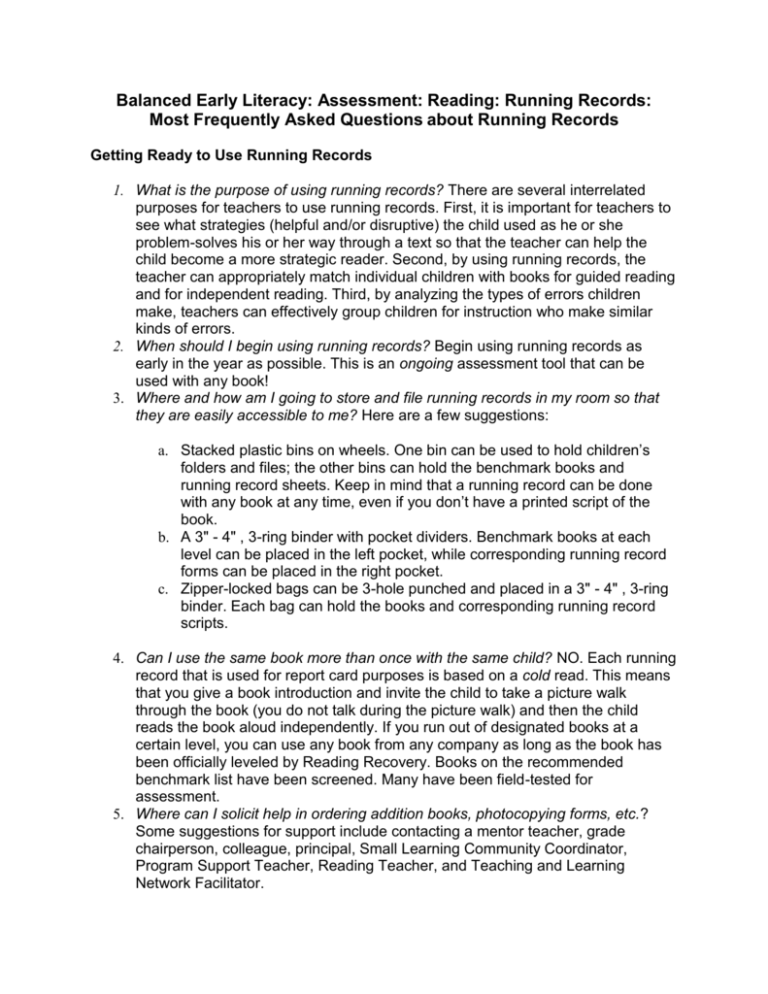
Balanced Early Literacy: Assessment: Reading: Running Records: Most Frequently Asked Questions about Running Records Getting Ready to Use Running Records 1. What is the purpose of using running records? There are several interrelated purposes for teachers to use running records. First, it is important for teachers to see what strategies (helpful and/or disruptive) the child used as he or she problem-solves his or her way through a text so that the teacher can help the child become a more strategic reader. Second, by using running records, the teacher can appropriately match individual children with books for guided reading and for independent reading. Third, by analyzing the types of errors children make, teachers can effectively group children for instruction who make similar kinds of errors. 2. When should I begin using running records? Begin using running records as early in the year as possible. This is an ongoing assessment tool that can be used with any book! 3. Where and how am I going to store and file running records in my room so that they are easily accessible to me? Here are a few suggestions: a. Stacked plastic bins on wheels. One bin can be used to hold children’s folders and files; the other bins can hold the benchmark books and running record sheets. Keep in mind that a running record can be done with any book at any time, even if you don’t have a printed script of the book. b. A 3" - 4" , 3-ring binder with pocket dividers. Benchmark books at each level can be placed in the left pocket, while corresponding running record forms can be placed in the right pocket. c. Zipper-locked bags can be 3-hole punched and placed in a 3" - 4" , 3-ring binder. Each bag can hold the books and corresponding running record scripts. 4. Can I use the same book more than once with the same child? NO. Each running record that is used for report card purposes is based on a cold read. This means that you give a book introduction and invite the child to take a picture walk through the book (you do not talk during the picture walk) and then the child reads the book aloud independently. If you run out of designated books at a certain level, you can use any book from any company as long as the book has been officially leveled by Reading Recovery. Books on the recommended benchmark list have been screened. Many have been field-tested for assessment. 5. Where can I solicit help in ordering addition books, photocopying forms, etc.? Some suggestions for support include contacting a mentor teacher, grade chairperson, colleague, principal, Small Learning Community Coordinator, Program Support Teacher, Reading Teacher, and Teaching and Learning Network Facilitator. "Doing" Running Records 6. Who should take running records? The classroom teacher or ESOL teacher should take running records because they are the teachers who work directly with the children. It is not recommended that reading specialists do running records in regular classroom situations – it is the classroom teachers who must become adept at helping children become strategic readers. In those instances where a substitute teacher has not been trained to take running records, it may be advisable for the reading specialist to help out in the classroom. Classroom assistants and parent volunteers can assist with the rest of the class while the classroom teacher takes running records. 7. What’s the difference between a cold read and a warm read? When teachers use running records as part of their ongoing instructional and assessment program, they sometimes have children do "warm reads." This mean that the children have heard or read the book before. When running records are done for report card or Title I purposes, however, it must be a "cold read," meaning that the child has never read or heard the story before. 8. What is a "picture walk?" A picture walk is when a child looks at the pictures before reading the book in order to get an idea of what the story might be about. It sets the stage for reading and approximates how readers naturally approach text – they browse through the book first. Teachers should teach children how to take a picture walk through a book during shared reading and guided reading sessions. When used for instructional purposes, the teacher and children talk their way through the pictures, anticipating what might be happening. When inviting a child to take a picture walk as part of a running record introduction, the teacher does not talk. The purpose is to see how the child used this strategy independently to help himself or herself. 9. What about comprehension? After the child reads the story, she or he must retell the story in a way that makes sense. If the child doesn’t readily retell the story, the teacher can prompt the child with questions of the type listed in the directions for running records. Some prompts are appropriate for easy texts; others are more appropriate for more complex texts. A partial or complete retelling is required – a confused retelling or no response suggests to the teacher that s/he may want to use easier text instructionally with the child, emphasizing comprehension. Encouraging children to "make pictures in your mind of what’s happening" and concentrate on shorter sections of text may be effective teaching strategies for helping children focus on meaning. 10. Can a child look back into the book during the retelling? Yes, if he or she needs to. 11. Is it unsettling to children for the teacher to take running records as the child reads? Teachers have found that it is generally not unsettling to children. It’s a good idea to tell children before you take a running record the first few times that you will be taking notes so that you can figure out how to help him/her become a better reader. As teachers embed the use of running records into their ongoing instructional and assessment programs, children will become accustomed to them. 12. How can teachers get better at taking running records? The more running records teachers take, the easier the process becomes. Here are some suggestions to help you at the beginning: (1) keep a copy of the coding system handy; (2) plan after-school workshops in which groups of teachers practice with each other, with child readers, or with videotapes of children reading; (3) set up a mentor/buddy system with another teacher, and (4) when taking a running record without using a printed script, write what the child said when an error occurs, then go back after the child has finished reading and fill in what the text said. 13. I know that running records can be used as an ongoing assessment tool, but how do I fit running records into my busy schedule? Running records should be done informally and in a non-threatening environment – no stressful situations for teacher and child! Some times that work well are during "choice time," guided reading group time, and independent reading time. Scoring Running Records 14. If a child makes a substitution for the same word more than one time, do I count it as an error each time? Yes. For example, if a child says "I am" instead of "I’m" six times throughout the story, it counts as six errors. The only exception is for proper names: each name counts only as one error no matter how many times the child makes a substitution. Using Running Records to Plan for Instruction 15. How can I use running records to plan for instruction? By using running records as an assessment tool, the teacher will be able to see what strategies a child needs strengthened. The teacher can incorporate these reading strategies during "shared reading" (big books), during "guided reading" (reading groups, little leveled readers) and during Writing Workshop mini-lessons. Analysis of running records enables the teacher to match children with appropriate levels of books for instruction and for independent reading. Information gained from running records can help teachers make informed decisions about grouping children for instruction and about ordering books for lending libraries.
